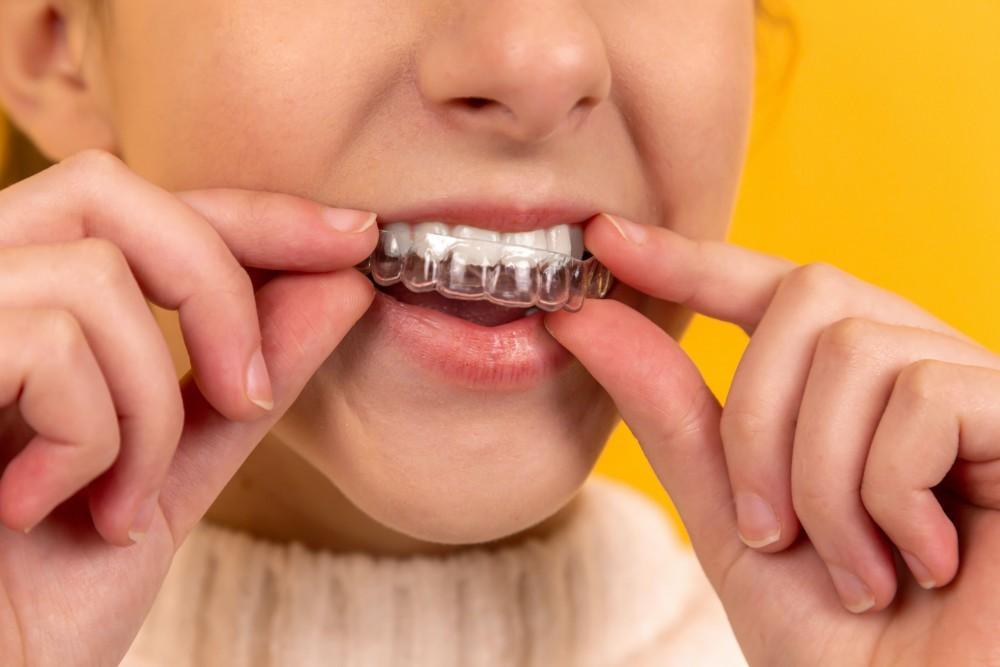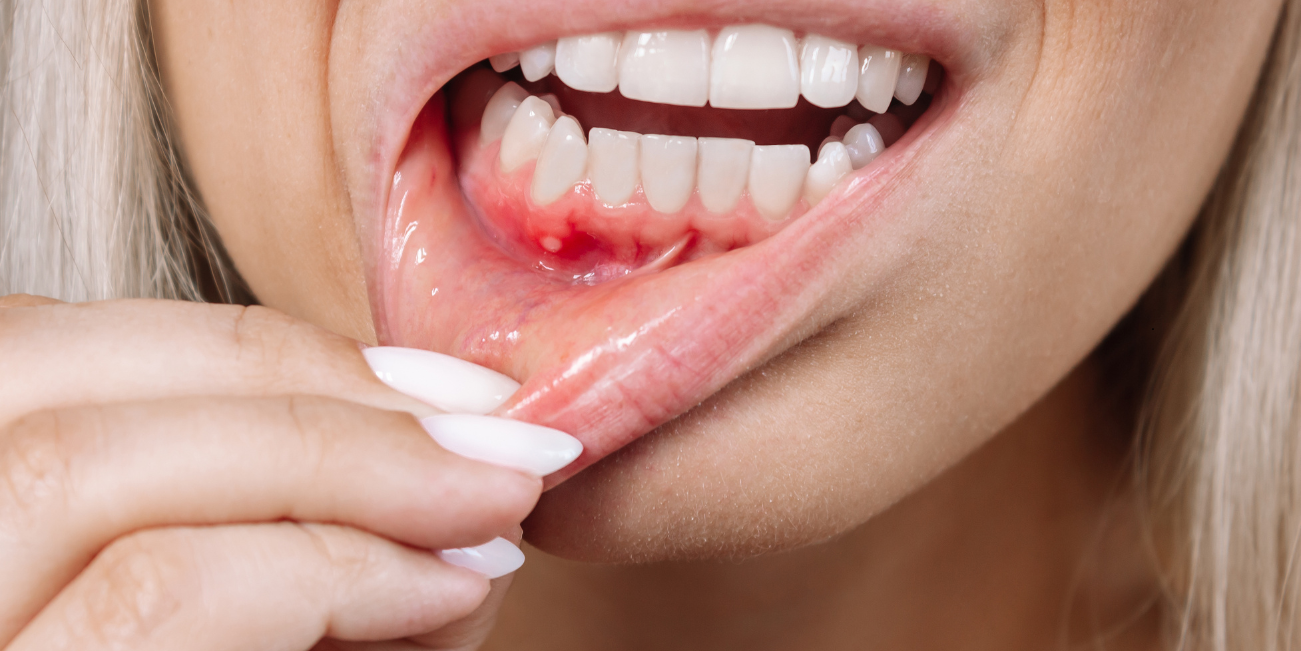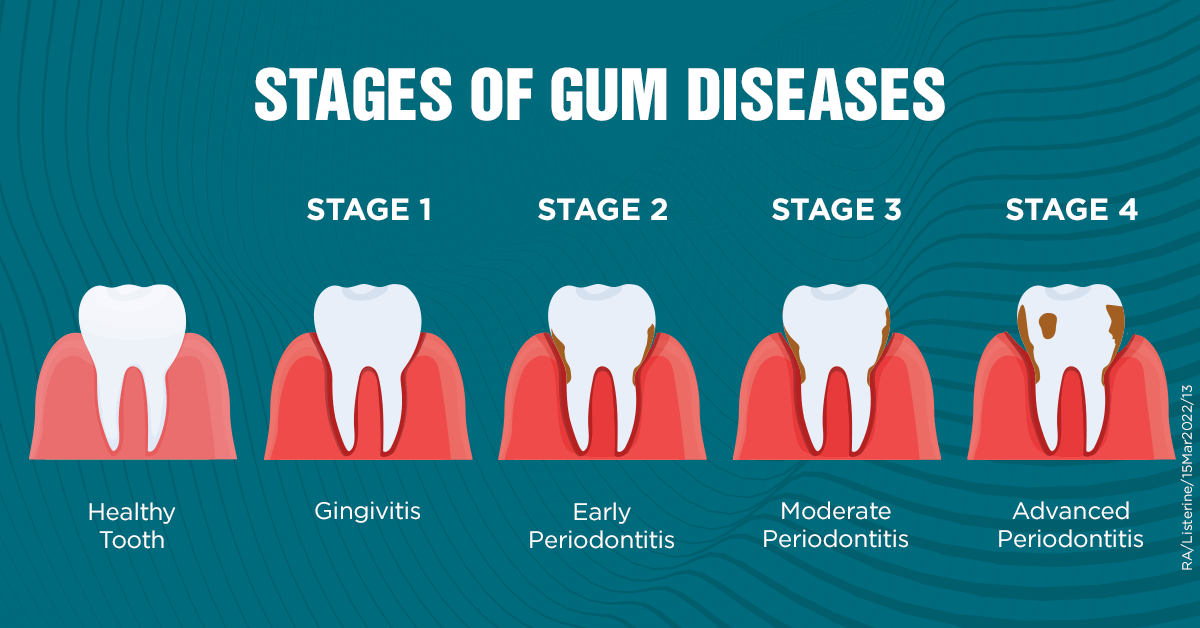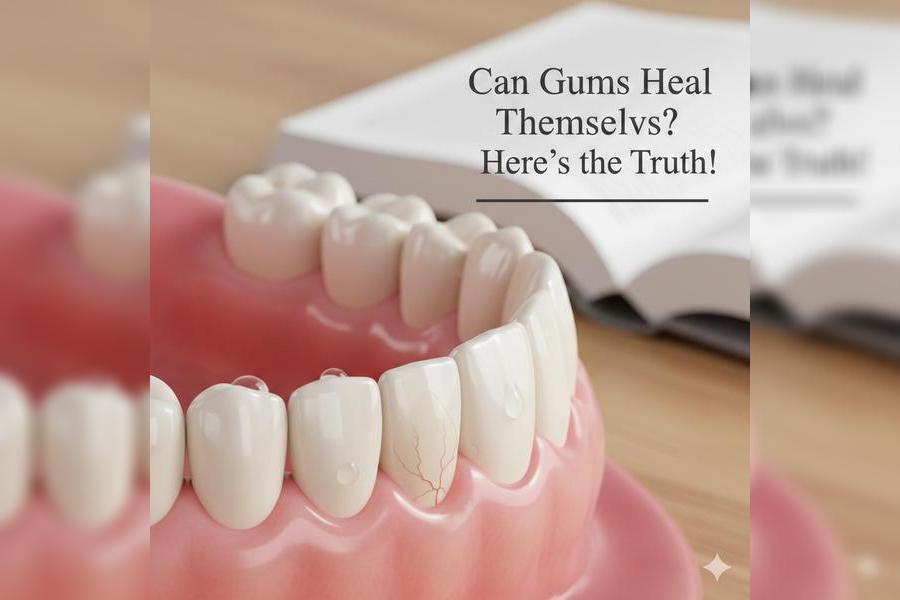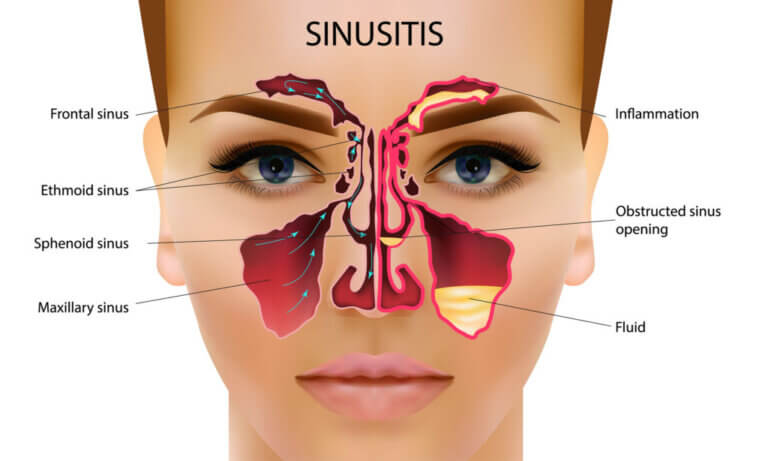The majority of people see Invisalign as a shortcut to straight teeth - just insert the clear trays and see your smile change. However, this is the reality that most people miss: when your gums are not in good condition, Invisalign may actually work against you.
Every week, we see patients who walk in with the same hopeful question: “Can you get Invisalign with gum disease?” They’ve noticed their teeth shifting, or maybe they’re tired of hiding their smile. But their gums tell another story: bleeding when brushing, tenderness when eating, maybe even a little recession creeping in.
The actual issue is not simply the aligners- it is the base that is keeping your teeth in position. Imagine your gums and jawbone are the soil of a tree. When the soil is loose and unsteady, transferring the tree here and there will not improve anything. In fact, it might make it fall.
That’s why gum health has to come first. Invisalign is a powerful tool, but it only works when the supporting structures are strong. And the good news? With the right treatment, most people can get Invisalign, even after being diagnosed with gum disease.
Gum Disease: An Overview
Instead of rattling off medical jargon, let’s break this down into what you actually see and feel.
-
Stage One: Gingivitis. This is the “warning light.” Your gums bleed when you floss, they look red instead of pale pink, and sometimes they feel puffy. At this point, no permanent damage has been done. With professional cleaning and better daily care, gums can heal completely.
-
Stage Two: Periodontitis. Here’s where things get serious. The gums begin to recede around your teeth creating deep pockets that allow the bacteria to flourish. You may experience foul breath that does not disappear, or the teeth may appear longer due to the loss of gums. In some cases the teeth even begin to feel loose.
-
Stage Three: Advanced Periodontal Disease. At this stage, bone loss becomes significant. Chewing can be painful, teeth may shift out of position, and some may need to be removed.
So when someone asks, “Can I get Invisalign with periodontal disease?” Our first response is always: “We need to know what stage your gums are in.” Because aligners don’t just move teeth - they depend on healthy gums and bone to guide those movements safely.
Can You Get Invisalign With Gum Disease? The Direct Answer

The short answer is: not until your gum disease is under control.
Here’s why. Invisalign aligners work by applying gentle but steady pressure to move your teeth into better alignment. But if the gums and bone that hold those teeth in place are weak or infected, the pressure can make the problem worse. Imagine trying to shift furniture around in a house where the floorboards are rotting—things move, but not in the way you want.
So if you currently have bleeding gums, gum recession, or periodontal pockets, your dentist will almost always recommend treating the gum disease first before starting Invisalign. Once your gums are stable, aligners become a safe and effective option.
This leads directly to the next question many patients ask…
Does Invisalign Cause Gum Disease?
The main question everyone raises prior to commencing treatment is: Does Invisalign cause gum disease? It is a reasonable question, though, since you will be wearing aligners 20 to 22 hours a day, and they are covering your teeth and gums nearly completely. The good news though is that Invisalign does not cause gum disease itself. As a matter of fact, Invisalign may be actually beneficial to gum when applied properly.
So why do some patients still worry about it? Let’s break this down.
Understanding the Root of Gum Disease
The relationship between Invisalign and gum health cannot be comprehended without knowing what causes gum disease in the first place.
-
Accumulation of plaque: Bacterial film attaches itself to teeth and gums.
-
Poor oral health: Brushing and flossing are not done consistently, which allows the hardening of plaque into tartar.
-
Gum inflammation: Inflammation of the gum is called gingivitis, which appears in the form of bleeding and swelling.
-
Development of periodontitis: When left unchecked, it causes recession of the gums, bone loss and loose teeth.
You will see that in this process, there is no direct role of aligners. Hence, one can’t deem Invisalign as the culprit - the bacteria are to be blamed.
Why Some People Think Invisalign Causes Gum Disease
The reason why some individuals confuse Invisalign with gum issues, are:
-
Stagnant Food and Plaque: As the teeth are covered by Invisalign trays, the food debris/plaque that is left behind after eating, can become trapped. When the aligners are not washed, this makes a warm and moist bacteria habitat.
-
Neglecting Oral Hygiene: Some people think that aligners will keep their teeth clean, hence, they may overlook brushing and flossing. This can ultimately cause gingivitis.
-
Skipping Dental Visits: Invisalign requires regular checkups. Missing these appointments means gum issues may go unnoticed until they worsen.
It is not Invisalign itself that is bad; it is how patients treat their teeth and gums when they have Invisalign on.
Can Invisalign Actually Help Gums Stay Healthy?
The surprising detail here is that, based on research, Invisalign might actually be better at improving gum health than traditional braces.
Removable Trays Make Cleaning Easier:
Unlike braces, Invisalign trays are removable and they do not leave food trapped around the bracket and wires - because they don’t have any. Furthermore, it implies that you will be able to brush and floss normally, which will lessen the buildup of plaque and bacteria.
Reduced Gum Inflammation:
Studies have indicated that patients with Invisalign tend to have fewer cases of bleeding gums and gingivitis than those with fixed braces on.
So while people ask, “Does Invisalign cause gum disease?” The truth is, Invisalign can be part of the solution once gum disease is under control.
Key Point: Gum Disease Must Be Treated First
This is where the original question: can you get Invisalign with gum disease, really matters. Invisalign won’t cause gum disease, but if you start treatment while you already have periodontal disease, the risks increase dramatically.
-
Active gum disease + aligner pressure = gum recession, bone loss, or tooth mobility.
-
Treated, stable gums + Invisalign = straighter teeth, healthier gums, easier cleaning.
That’s why dentists insist on treating gum disease first. Once stabilized, Invisalign with periodontal disease becomes a safe, even beneficial option.
Supporting Gum Health During Invisalign
To make sure gum problems don’t develop while wearing aligners, patients need to adopt a strict oral hygiene routine:
-
Brush after every meal before putting trays back in.
-
Use a water flosser to clean deep between teeth and gums.
-
Rinse aligners with antibacterial cleaning solution.
-
Use products that help in gum healing e.g. The Goodbye Company Gum Disease solution which contains Omega 3 and 9 oils with neem, clove essential oils. Not only does this aid in the prevention of gingivitis, but it also decreases sensitivity and inflammation, thus making it simpler to maintain a healthy set of gums when using Invisalign.
How Gum Disease Should Be Treated Before Invisalign

If you’ve been told you have gum disease but you’re still interested in Invisalign, you’re not alone. Many adults wonder: can you get Invisalign with gum disease if it’s treated first? The good news is yes, once your gums are stabilized, Invisalign with periodontal disease becomes a real option. But let’s unpack what gum treatment looks like step by step.
Step 1: Comprehensive Periodontal Examination
Before anything else, your dentist or periodontist will perform a full gum evaluation. This isn’t just a quick look at your teeth - it involves measuring pocket depth around each tooth, checking for bone loss with X-rays, and looking at gum recession.
-
Pocket depth: Healthy gums measure 1–3 mm. Pockets deeper than 4 mm suggest periodontitis.
-
Bone support: X-rays show if the infection has eroded bone around your teeth.
-
Gum stability: Are your gums firm, or do they bleed when touched?
This exam helps determine if you’re a candidate for Invisalign after treatment, or if gum health needs more attention first.
Step 2: Deep Cleaning (Scaling and Root Planing)
When gum disease is active, bacteria thrive below the gumline where your toothbrush can’t reach. This is why dentists recommend scaling and root planing; a non-surgical deep cleaning.
-
Scaling removes hardened tartar and bacterial deposits under the gums.
-
Root planing smooths the tooth’s surface so gums can reattach more firmly.
This treatment is often done in multiple sessions and may require local anesthesia. Patients often report reduced bleeding and fresher breath afterward.
Step 3: Targeted Therapies (Antibiotics or Laser Treatment)
For moderate to advanced cases, dentists may use additional therapies:
-
Antibiotics: Either taken orally or placed directly into gum pockets to kill bacteria.
-
Laser therapy: Some dental offices use lasers to sterilize pockets and promote healing.
Step 4: Home Care is Non-Negotiable
Even the best dental treatments won’t work unless daily home care improves. If you’re aiming for Invisalign after gum therapy, here’s what you’ll need to commit to:
-
Electric toothbrushes with gum care mode (proven to reduce plaque better than manual brushes).
-
Water flossers to flush bacteria from gum pockets.
-
Antimicrobial rinses recommended by your dentist.
This daily discipline is what keeps gum disease from coming back - because if it relapses, Invisalign will be postponed again.
Step 5: Re-Evaluation and Stability Check
Typically 3–6 months after gum treatment, your dentist will recheck gum pocket depth and inflammation. If the gums are healthy and bone levels stable, you can safely begin Invisalign.
-
Stable gums = Invisalign is possible
-
Unstable gums = more treatment first
Why This Matters Before Invisalign
At this point, you may still wonder: Why is all this necessary? The answer is simple: moving teeth with Invisalign when gum disease is active can lead to:
-
Severe gum recession
-
Increased tooth mobility
-
Accelerated bone loss
That’s why every reputable orthodontist insists on gum treatment first. Once gums are healthy, Invisalign can actually make oral hygiene easier, reducing the chance of future gum problems.
A Natural Boost for Gum Healing
While professional treatment is essential, you can support gum recovery naturally with oral care products designed for gum health. One option is The Goodbye Company Gum Disease solution, which uses Omega 3 and 9 oils infused with neem and clove essential oils.
Plus Points:
-
Omega oils reduce inflammation.
-
Neem has antibacterial properties to fight plaque.
-
Clove helps relieve gum tenderness and pain.
If you suffer from bleeding gums, tooth sensitivity, or gum pain, adding this natural solution to your daily routine can help your gums stay healthy long after treatment - preparing your mouth for a safe Invisalign journey.
What Are the Risks of Invisalign With Untreated Gum Disease?
Many patients ask: “Can you get Invisalign with gum disease if I just go ahead with it?” The honest answer is: starting Invisalign without treating gum disease is a recipe for serious complications. Invisalign isn’t harmful by itself, but when combined with periodontal disease, it can speed up damage that’s already happening below the surface.
Let’s go through the major risks so you understand why dentists never recommend Invisalign until gum health is restored.
Risk 1: Accelerated Gum Recession
When gums are already inflamed or weakened, adding orthodontic pressure can push them back even faster.
-
What you’ll notice: Teeth look longer, gums pull away, and sensitivity to hot and cold increases.
-
Why it happens: Invisalign applies steady force to teeth, and if gum tissue is unhealthy, it can’t adapt properly.
-
Long-term impact: Exposed roots increase the risk of cavities and discomfort, and cosmetic concerns become harder to fix.
This is one of the clearest reasons why the question “can you get Invisalign with gum disease” almost always comes with a cautionary no; unless the gums are stable.
Risk 2: Loose Teeth and Tooth Loss
One of the scariest outcomes of combining Invisalign with periodontal disease is tooth mobility.
-
The problem: Periodontitis eats away at the bone that anchors teeth.
-
What Invisalign adds: The gentle shifting movement can destabilize already-weakened teeth.
-
Worst case: Teeth may loosen beyond recovery, leading to extractions.
Once bone is lost, it’s extremely difficult, and sometimes impossible - to rebuild naturally. That’s why early treatment of gum disease is so crucial before considering aligners.
Risk 3: Worsening Inflammation and Infection
Aligners cover the teeth almost completely, which is normally fine for healthy gums. But when gum disease is active, trays can act like a greenhouse; trapping bacteria, warmth, and moisture.
-
Result: Inflammation worsens, gums become even puffier, and bleeding may increase.
-
Side effects: Persistent bad breath, sore gums, and swelling around aligner edges.
-
Long-term concern: Gum pockets deepen, making the infection more difficult to reverse.
So while Invisalign doesn’t directly cause gum disease, wearing aligners with untreated gum issues can make symptoms spiral out of control.
Risk 4: Bone Loss Progression
Healthy bones are essential for tooth movement. With active periodontal disease, bacteria attack the supporting bone around teeth. If Invisalign is added to the mix, movement may outpace the bone’s ability to adapt.
-
X-ray evidence: Dentists often see faster bone deterioration in untreated gum disease patients who try to move teeth.
-
Outcome: Compromised jawbone means not only Invisalign failure but potential difficulty with implants or other restorative treatments later in life.
Risk 5: Treatment Failure and Relapse
Imagine investing time and money into Invisalign, only to discover your results won’t last. That’s what often happens when gum disease isn’t treated first.
-
Teeth move, but stability is lacking. Gums and bones can’t hold them in their new positions.
-
Retainers don’t solve it. Even with post-treatment retainers, unhealthy gums allow relapse.
-
Financial waste. Patients may end up paying twice—first for Invisalign, then for gum treatments they should have done beforehand.
This is why periodontists always say: fix the foundation before moving the structure.
Why These Risks Matter
When you’re searching for answers about can you get Invisalign with gum disease, you’re really asking: Is it safe? The risks above show why dentists say Invisalign should never start until periodontal health is restored.
But here’s the hopeful side: once gum disease is treated and under control, these risks are dramatically reduced. Not only that, but Invisalign can then become part of the solution by straightening teeth and making daily cleaning easier—preventing gum disease from returning.
Supporting Gum Health Before Invisalign
To avoid these risks, support your gum recovery while waiting for clearance:
-
Get professional cleanings and follow all periodontal care instructions.
-
Use an antimicrobial rinse or products like The Goodbye Company Gum Disease, which combine Omega 3 and 9 oils with neem and clove essential oils. This natural formula helps fight bacteria, reduce inflammation, and ease sensitivity; all of which prepare your gums for safe Invisalign treatment.
-
Stick to daily brushing, flossing, and aligner hygiene once you’re cleared to start.
Invisalign Vs. Braces For Patients with Gum Disease
|
Factor |
Invisalign |
Traditional Braces |
|
Gum Health Requirement |
Requires controlled periodontal health |
Same, but harder to maintain hygiene |
|
Hygiene Ease |
Removable trays allow easy brushing/flossing |
Fixed brackets trap food, harder to clean |
|
Risk of Gum Irritation |
Lower (smooth plastic) |
Higher (wires/brackets can irritate) |
|
Plaque & Tartar Buildup |
Lower |
Higher |
|
Tooth Movement Control |
Gentle, precise |
Less customizable |
|
Monitoring Capability |
Better - aligners can be removed for checks |
Poorer visibility/cleaning access |
Benefits of Invisalign Once Gums Are Healthy

So far, we’ve answered the tough part of the question: can you get Invisalign with gum disease? The short answer is no, at least not until the gums are treated and stable. But here’s the exciting part: once gum disease is under control, Invisalign doesn’t just become safe - it actually offers unique benefits for long-term gum health. Let’s break them down.
Straighter Teeth Mean Easier Cleaning
One of the biggest challenges with Invisalign with periodontal disease patients is crowded or misaligned teeth. Overlaps and tight gaps create “plaque traps” where bacteria thrive.
-
Before Invisalign: Brushing misses hidden spots, flossing is frustrating, and plaque hardens into tartar.
-
After Invisalign: Teeth align more evenly, creating smoother surfaces that are easier to keep clean.
This directly reduces the risk of plaque buildup, gingivitis, and recurrent gum problems. In other words, Invisalign not only makes teeth look better but also makes your hygiene routine more effective.
Reduced Risk of Gum Inflammation
When teeth are straight, gums can fit snugly around them, creating a better protective seal. Crooked teeth often cause gums to look uneven or puffy.
-
Improved gum contour = fewer gaps for bacteria to collect.
-
Less bleeding when brushing = stronger gum health long-term.
Clinical studies show that patients who complete Invisalign often see lower gum inflammation scores compared to those who wore braces.
Better Bite = Less Stress on Gums and Bone
Misaligned bites don’t just affect chewing—they also put uneven pressure on gums and supporting bone. Over time, this extra stress contributes to gum recession and bone loss.
-
With Invisalign: Teeth are guided into a healthier bite.
-
Result: Pressure is spread more evenly, reducing trauma to gums and jawbone.
For patients who once asked can you get Invisalign with gum disease, this is a big win, because healthier bite forces mean lower chances of gum relapse.
Confidence to Maintain Oral Health
Let’s be real: when people invest in Invisalign, they usually start taking oral hygiene more seriously. Wearing aligners means brushing after meals, flossing daily, and paying attention to gum health.
-
Psychological boost: Patients with straighter teeth are more motivated to keep them clean.
-
Lifestyle change: Aligners train you into better daily habits.
This ripple effect often leads to improved gum care long after Invisalign treatment ends.
Invisalign vs. Braces for Gum Health
If you’ve had gum problems in the past, Invisalign usually outperforms braces. Here’s why:
-
Removable trays: Brushing and flossing are simple.
-
No brackets or wires: Less risk of plaque buildup around hardware.
-
Gentle forces: Easier on gums compared to braces, which sometimes create more inflammation.
For patients worried about Invisalign with periodontal disease, this difference is huge - aligners are simply friendlier to gums when care is consistent.
Natural Support for Gum Healing During Invisalign
Even after gum treatment, maintaining gum health during Invisalign is crucial. Along with dentist checkups, natural oral care products can help.
For example, The Goodbye Company Gum Disease solution uses Omega 3 and 9 oils, neem, and clove essential oils. Together, they:
-
Reduce inflammation naturally.
-
Fight bacteria that trigger gum problems.
-
Soothe sensitivity in gums recovering from disease.
For anyone who’s had bleeding gums, gum tenderness, or tooth sensitivity, adding this to your routine ensures gums stay strong while Invisalign works its magic.
The Big Picture
So, can you get Invisalign with gum disease? Not right away. But once your gums are treated and stable, Invisalign doesn’t just give you straight teeth—it can actually protect your gums for life.
-
Easier cleaning.
-
Reduced gum inflammation.
-
A healthier bite.
-
More confidence to maintain oral care.
In the long run, Invisalign is one of the best investments for both your smile and your gum health.
When Is Invisalign With Periodontal Disease a Good Option?

This is the hopeful side of the story. Many people think having gum disease automatically disqualifies them from Invisalign forever. That’s not true. With proper treatment and monitoring, Invisalign with periodontal disease can actually be one of the best solutions for long-term dental health.
After Gum Treatment and Healing
The first step is professional periodontal care. Once gums are no longer bleeding, inflammation has reduced, and bone levels are stable, Invisalign can become a safe option. Dentists often wait several weeks or months after treatment to ensure full healing.
This is when asking can you get Invisalign with gum disease turns into: “Yes, once it’s under control.”
Why Invisalign is Safer Than Braces for Periodontal Patients
Traditional braces can complicate things for people who have a history of gum disease:
-
Brackets and wires trap food, increasing plaque buildup.
-
More difficult hygiene around hardware raises risk of recurrence.
-
Stronger forces can stress already compromised bone and gums.
Invisalign avoids these problems because aligners are removable, easy to clean, and apply gentler, more controlled forces on teeth.
Ideal Candidates for Invisalign with Past Gum Disease
You may be a good candidate if:
-
Your periodontal disease is treated and stable.
-
You’re committed to excellent daily hygiene (brushing after meals, flossing, cleaning aligners).
-
You visit your dentist and periodontist for frequent checkups (every 3–4 months instead of 6).
-
Your dentist clears you for orthodontic movement after examining gum depth and bone support.
The Long-Term Benefits for Periodontal Patients
Choosing Invisalign after gum treatment isn’t just about aesthetics—it’s about prevention. Straighter teeth reduce future gum risks, allow for easier flossing, and distribute bite pressure more evenly across teeth and gums.
For those who once worried that Invisalign with periodontal disease was off-limits, it can actually be a safe, strategic way to protect gum health for life.
FAQS - Can You Get Invisalign With Gum Disease
Is Invisalign safe for people with receding gums?
Yes, but only if the recession is stable and not actively progressing. Your dentist will monitor gum levels closely during treatment.
Can Invisalign worsen gum recession?
If gum disease isn’t treated first, yes—it can make recession worse. But if gums are healthy, Invisalign typically does not cause additional recession.
How long after gum disease treatment can I get Invisalign?
Usually 3–6 months after periodontal therapy, once your dentist confirms stability.
Can you wear Invisalign if you’ve had gum surgery?
Yes, but healing time is essential. Your dentist or periodontist will let you know when it’s safe.
Which is better for gum disease patients: Invisalign or braces?
Invisalign is usually safer because the removable trays make cleaning easier, reducing the risk of plaque buildup compared to braces.
Outlook
So, can you get Invisalign with gum disease? The clear answer is: not until gum disease is treated and under control.
Trying to move teeth in an unstable mouth can cause gum recession, bone loss, and even tooth loss. But once periodontal health is restored, Invisalign is not only safe but can also help maintain gum health long-term.
If you’re considering Invisalign and know you have gum problems, the best step is a comprehensive periodontal exam first. Treat the disease, stabilize your gums, and then step into orthodontic treatment with confidence. Again, if you’re looking for a product that cleanses your gums and keeps them healthy, The Goodbye Company’s Gum Disease oral solution is your best bet. Daily usage can help keep gum disease at bay.
In the end, Invisalign isn’t off-limits for gum disease patients - it just requires timing, treatment, and teamwork between your dentist and periodontist.


